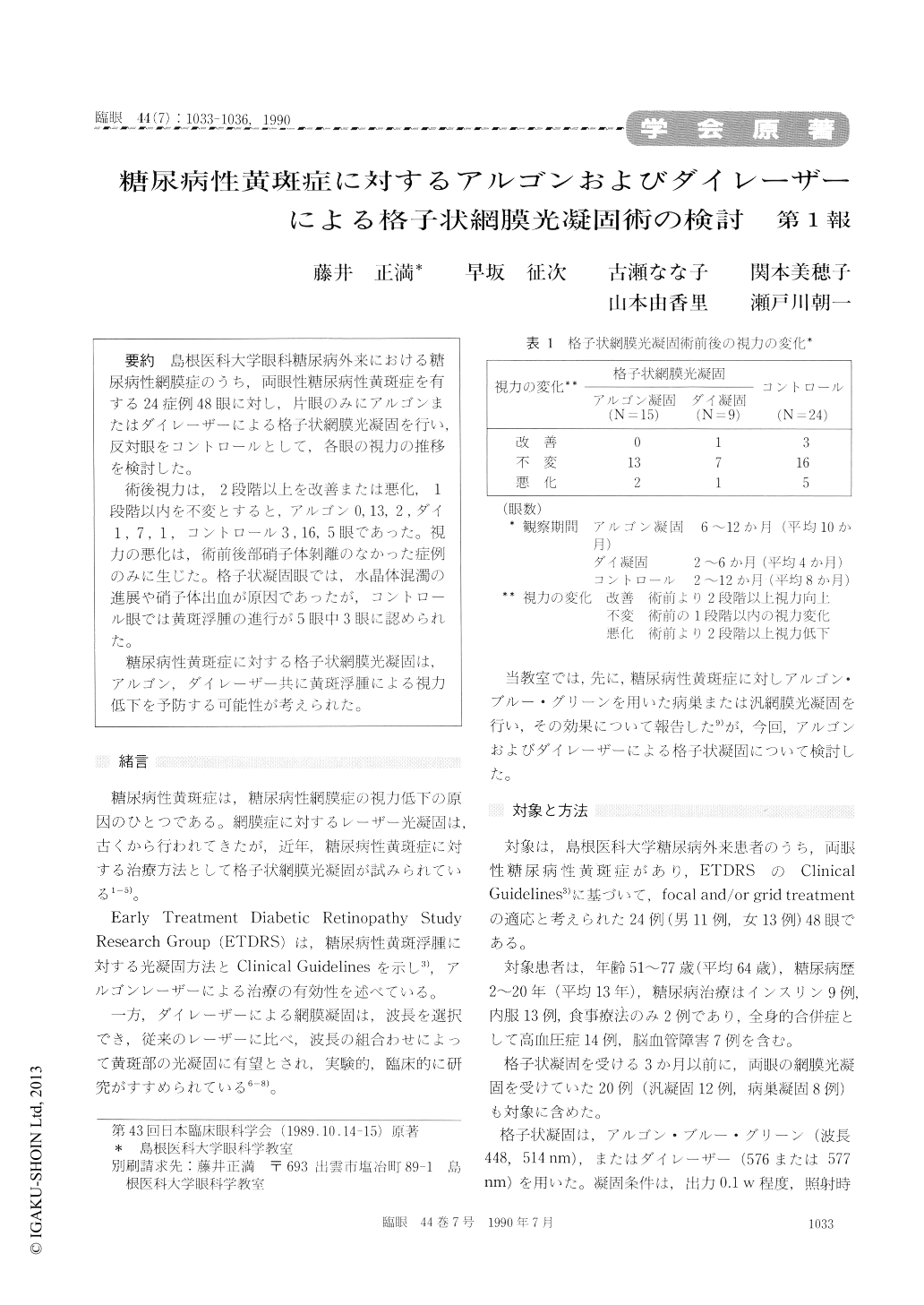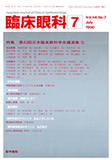Japanese
English
- 有料閲覧
- Abstract 文献概要
- 1ページ目 Look Inside
島根医科大学眼科糖尿病外来における糖尿病性網膜症のうち,両眼性糖尿病性黄斑症を有する24症例48眼に対し,片眼のみにアルゴンまたはダイレーザーによる格子状網膜光凝固を行い,反対眼をコントロールとして,各眼の視力の推移を検討した。
術後視力は,2段階以上を改善または悪化,1段階以内を不変とすると,アルゴン0,13,2,ダイ1,7,1,コントロール3,16,5眼であった。視力の悪化は,術前後部硝子体剥離のなかった症例のみに生じた。格子状凝固眼では,水晶体混濁の進展や硝子体出血が原因であったが,コントロール眼では黄斑浮腫の進行が5眼中3眼に認められた。
糖尿病性黄斑症に対する格予状網膜光凝固は,アルゴン,ダイレーザー共に黄斑浮腫1こよる視力低下を予防する可能性が考えられた。
We treated 24 eyes, 24 patients, with grid pattern photocoagulation according to the technique of Early Treatment Diabtetic Retinopathy Study Group. In all the patients, we treated one eye only, with the fellow eye serving as control. Blue-green argon was used in 15 eyes. Dye yellow, 576 or 577 nm, was used in 9 eyes.
In argon-treated eyes, the visual acuity remained unchanged in 13 and deteriorated by 2 lines or morein 2. In dye-treated eyes, the visual acuity improved by 2 lines or more in 1, remained unchanged in 7 and deteriorated in 1. In the untreated 24 control eyes, the visual acuity improved in 3, remained unchanged in 16 and deteriorated in 5. In 3 control eyes, the decreased visual acuity was due to increase in macular edema. There was no instance of increase in macular edema in the laser-treated eyes.
The findings appeared to indicate that grid pat-tern photocoagulation with argon or dye laser may prevent further deteroration of diabetic maculopathy.

Copyright © 1990, Igaku-Shoin Ltd. All rights reserved.


